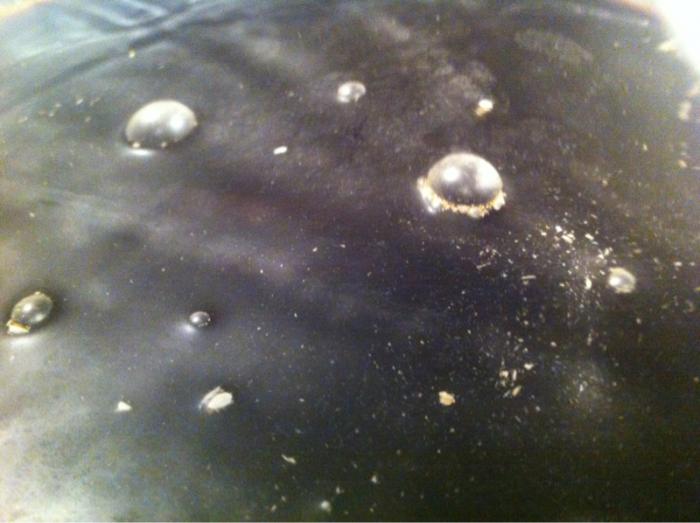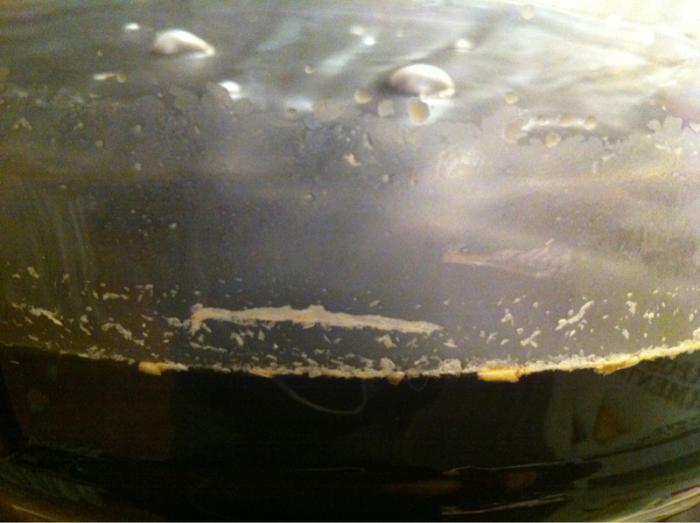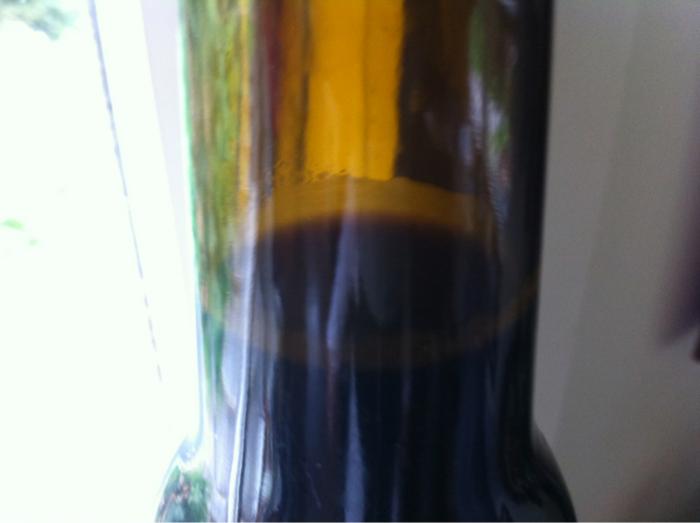Microphobik
Well-Known Member
- Joined
- Apr 15, 2013
- Messages
- 320
- Reaction score
- 18
So, i have been working on a troublesome chocolate milk stout for almost two months. The only trouble being that I haven't been able to get the gravity down low enough. The FG came in at 1.027 after accounting for what the lactose added, which actually brought I to 1.036. On the plus see it has tasted great all the way along. I have decided that I must not be getting an accurate temperature reading during mash and am probably just mashing a bit higher than I thought. A problem because I was trying to mash high to begin with for a big bodied beer.
At about the 30 day mark I tried racking to a secondary in case the problem was a stuck fermentation. I was wondering if I had oxygenated enough and figured the racking might kick things back into gear. Only issue was that there was a good 5 inches in the secondary after racking. But I did see the odd bubble the next day and assumed I was fine and that there was CO2 production taking place. Turns out that wasn't the problem because there has been no change in gravity.
The next day I had to leave town for three weeks. I came back to find a slightly concerning film on top of the beer. It was very mild, but it was almost oily and looked a bit like A Kham yeast formation like you might find on Sauerkraut. But it was so mild it was hard to tell. It also had a few bubbles which looked more like Krausen than a yeast growth but I wouldn't expect Krausen after 3 weeks in a secondary.
Keep in mind, this has cacao beens soaked in vodka in it, as well as lactose. And I soaked the cacoa for about two weeks and then left them in the primary for several weeks. That was longer than recipe called for and I may have pulled oil from the nibs.
I tasted it and found zero noticeable off flavors so I bottled. 3 days later I am seeing a similar film/ring at the surface line in the bottle.
The lack of off flavor had me thinking this might just be cacao oil and maybe activity triggered by me coming home after three weeks and cranking up the heat in the house. But the film appearing in the bottle has me thinking infection of some kind.
I've never had an infected batch nor have I ever made a milk stout or used cacao before so I don't know what to make of it. Would love a few educated opinions.
It's kind of hard to tell in the pics but take a look at what I'm talking about in the attached pics.



At about the 30 day mark I tried racking to a secondary in case the problem was a stuck fermentation. I was wondering if I had oxygenated enough and figured the racking might kick things back into gear. Only issue was that there was a good 5 inches in the secondary after racking. But I did see the odd bubble the next day and assumed I was fine and that there was CO2 production taking place. Turns out that wasn't the problem because there has been no change in gravity.
The next day I had to leave town for three weeks. I came back to find a slightly concerning film on top of the beer. It was very mild, but it was almost oily and looked a bit like A Kham yeast formation like you might find on Sauerkraut. But it was so mild it was hard to tell. It also had a few bubbles which looked more like Krausen than a yeast growth but I wouldn't expect Krausen after 3 weeks in a secondary.
Keep in mind, this has cacao beens soaked in vodka in it, as well as lactose. And I soaked the cacoa for about two weeks and then left them in the primary for several weeks. That was longer than recipe called for and I may have pulled oil from the nibs.
I tasted it and found zero noticeable off flavors so I bottled. 3 days later I am seeing a similar film/ring at the surface line in the bottle.
The lack of off flavor had me thinking this might just be cacao oil and maybe activity triggered by me coming home after three weeks and cranking up the heat in the house. But the film appearing in the bottle has me thinking infection of some kind.
I've never had an infected batch nor have I ever made a milk stout or used cacao before so I don't know what to make of it. Would love a few educated opinions.
It's kind of hard to tell in the pics but take a look at what I'm talking about in the attached pics.





